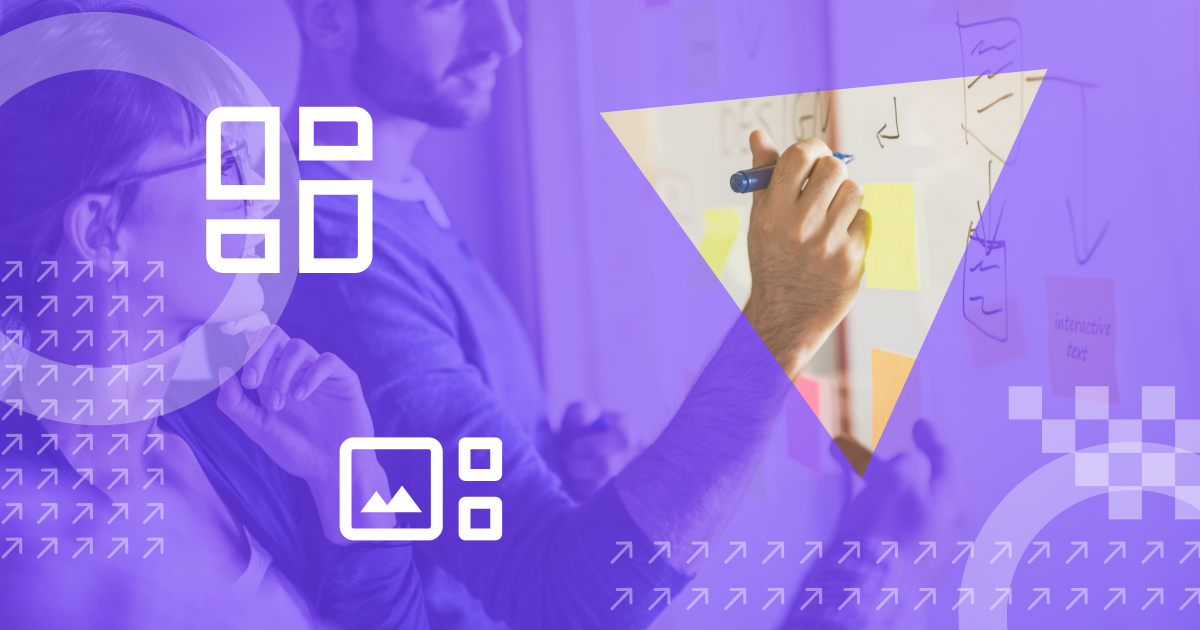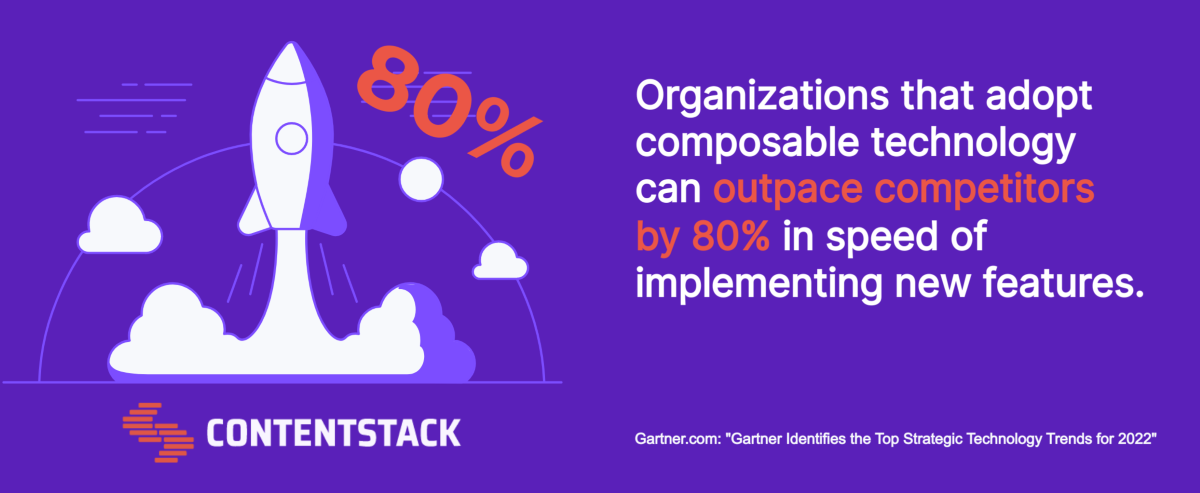Seamless transition: Your path from monolithic to composable DXP

Companies like Burberry and Emma transitioned from monolithic to composable DXP with great success, and you can do the same. See how DXPs have evolved, what the relevant building blocks are, and how you can implement a composable DXP strategy. Redefine your digital strategy today with a composable DXP. Request a demo to get started.
Highlights
You’ll learn how to transition from a monolithic to a composable DXP
- Assess current infrastructure: Evaluate your current DXP to identify migration needs
- Define objectives: Outline what you aim to achieve with a composable DXP
- Select the right technologies: Choose technologies that align with your goals
- Plan your migration: Develop a phased approach to reduce disruption
- Training and support: Prepare your team for the transition
Go composable today and unlock the flexibility and innovation to set your business apart. Request a demo to jumpstart the process.
Keep reading to learn more!
In digital experience platforms, businesses have found a worthy tool to boost branding, service multiple digital channels, and deliver more value. DXPs allow you to create, manage, and optimize content based on the context of the customer's journey.
But they were not always in use. DXPs have gone from rigid, monolithic models to flexible, composable models. But how has it evolved over the years, and how can you build the composable DXP of your dreams?
From monolithic to composable models
As the demand for agility and personalized experiences kept growing, it was vital to go composable. Before then, DXP were mostly integrated systems that were difficult to customize or scale. But what has that journey been like? Here is a look.
- Content management systems (CMS), around early 2000s.
- Web experience management (WEM) systems, mid-2000s.
- Customer experience management (CXM) systems, late 2000s.
- Integrated DXP, early 2010s.
- Composable DXPs, from mid-2010s to present.
It has taken a while to get to composable DXP, but they are now an essential tool driving digital transformation.
The role of DXP in digital transformation
DXPs break down silos to ensure seamless data flow across modules. That allows businesses to harmonize their engagement. It also helps them deliver omnichannel experiences.
DXPs also support digital transformation in several other ways, as below.
- Centralizing customer data across multiple touchpoints.
- Personalizing user experiences based on customer data.
- Easing the integration of innovative third-party services.
DXPs also promote digital innovation because they help you adapt to new trends. As your business grows, DXPs adapt and grow with you. So, you can add new features or integrate new technology.
Monolithic vs. composable DXP
Here is the most obvious difference. A monolithic DXP is built as an all-in-one solution, with the back and front end tightly coupled. They are ideal for operations that rely on a single digital channel.
Composable DXPs are the opposite. They are modular—so you have multiple small, independent services that interact via APIs. That means composable DXPs offer greater control and flexibility. They are also easier to manage and customize.
Benefits of composable DXPs
Here are a few of the many benefits of a composable DXP.
- Improved resilience - You can identify, isolate, and fix faults in one module without disrupting your operations.
- Cost-efficiency - With the best-of-breed approach, you only select the best solutions that suit your business needs, and that saves cost.
- Enhanced personalization: Composable DXPs have extensive data analytics that enables you to deliver tailored solutions to your customers on all channels.
- Scalability: You can scale on demand and integrate with new technologies as they emerge or as customer demand.
- Better speed and agility: The modular nature of the system results in faster work speed and quicker updates and product releases. Also, it leads to better collaboration among work teams.
Building blocks of composable DXP
Specific technologies that make a composable DXP fall under the MACH acronym.
- Microservices: This breaks the application into multiple small and independent services, which makes it easier to track composable DXP modules.
- API-first design: APIs facilitate DXP integration and data sharing, which makes them a vital part of the composable DXP architecture.
- Cloud-native technologies: A software as a service (SaaS) that allows you to enjoy cloud resources beyond hosting and storage. So, automatic updates, elastic scaling, security, Etc.
- Headless CMS: An approach that treats the front end and back end as separate entities and relies on APIs to connect with any front-end device.
Packaged business capabilities (PBC)
Packaged business capabilities (PBCs) are software components that enable business users to perform specific business tasks or functions. In a monolithic system, these capabilities are combined as a suite. Here are candid examples of PBCs.
- Marketing automation.
- Content management.
- Personnel management.
- Customer relationship management systems.
- Inventory management.
- Digital asset management (DAM).
PBCs exemplify the flexible and modular design of a composable architecture. They have a user interface that facilitates IT and business alignment.
Importance of headless systems and APIs in composable DXPs
Headless systems and APIs support multi-channel content delivery. They also promote security as the back end and front end are separate entities only connected through APIs. An attack on the front end has no effect on the system.
Headless systems and APIs also facilitate third-party integrations. That means when there is a new technology or device, you can quickly adapt to or integrate them.
Steps to implement a composable DXP strategy
Going composable is a strategic move that requires serious planning. Here are the practical steps to follow.
Step 1: Define your goals, scope, and strategy.
Outline the goal of the business for going composable. Outline your aims, potential challenges, and how you plan to implement the system. Use those points to build your strategy.
Step 2: Involve relevant stakeholders
Discuss the plan with your stakeholders. Get their ideas and suggestions, and note their concerns. Ensure that you cater to their needs and get their buy-in. Make sure everyone is pulling in one direction.
Step 3: Assess your current tech stack
Consider what you have on the ground. Look at IT stacks that can be part of the new system and note those that need to be removed. Also, identify gaps and note all the improvements you need to make.
Step 4: Plan your DXP ecosystem
Outline the features, functions, and solutions you need for your composable DXP. Consider workflows, data governance, and marketplace for apps, integrations, and extensions. Use a comprehensive perspective to enable you to see all the intricate details that you need to succeed.
Step 5: Define your roadmap
This should be high-level and must account for all factors that will impact your composable DXP build. So, consider pricing, data privacy, compliances, and technical issues, like dependencies, integration, Etc. Also, consider short and long-term support for your team.
Step 6: Implement MACH
Plan your setup according to MACH principles. Implement microservices, APIs, cloud-native technologies, and a headless system.
Step 7: Begin the composable DXP journey
Going composable is a significant change and may present bumps along the way. So, take an incremental approach, as that will allow you to progress without too many upsets to the team.
Best Practices for composable DXP transition
Going composable comes with challenges, so it is essential to stick to best practices, as follows.
- Prioritize customer experience in every decision.
- Ensure robust data integration capabilities.
- Foster a culture of continuous improvement and innovation.
Strategic benefits of transitioning to a composable DXP
The pressing question. What can you expect when you implement a composable DXP? Here are a few.
- More optimized customer experience management
- Faster adaptation to market trends and shifts.
- It saves cost as you are not tied to an integrated system.
- Greater resilience. An issue in one module does not affect the system.
- More flexibility to use custom solutions and extend DXP features.

Future trends in DXP evolution
Technology and market trends will continue to shape DXP's evolution. Here are trends to watch.
- Open-source and future security.
- Greater AI and Machine learning integration.
- Low-code/No-code platforms for plug-and-play ease.
- Voice and visual search prevalence in DXPs.
Aside from the above, data privacy and security have recently come to the fore. So, DXPs will seek greater security integrations moving forward.
Case studies
Burberry
What happens when you rely on a monolithic system? You may struggle to adapt to innovations in your industry, as Burberry found out. They also could not deal with multiple translation requests.
With Contentstack's composable DXP, Burberry solved the adaptation problems. It also increased translation speed by 80% and reduced tickets to only one per week.
Here is what Sonia Latoracca, digital commerce content manager, had to say."Contentstack helps our engineers to move fast and concentrate on business requirements by reducing proprietary platform inconveniences."
Read more about how Burberry achieves speed and agility through Contentstack's composable DXP.
Emma
Emma struggled with its initial growth—too many tickets and a legacy CMS that was not fit for purpose.
Contentstack’s composable DXP offered the right solution, which enabled them to increase the speed of campaign launches and updates.
Andreas Westendörpf, Chief Technology Officer, said. "The Contentstack user interface has really improved the developer work environment, and we are beginning to see the creative teams develop wider experiences that should increase conversion."
Read more about Emma’s success story.
FAQ section
What is a digital experience platform (DXP)?
A digital experience platform (DXP) is software that connects your operations with your digital channels, helping you compose, manage, optimize and deliver digital experiences.
What does composable DXP mean?
A Composable DXP is a DXP that allows you to select and integrate several "best-of-breed" modules from multiple vendors using APIs and a headless approach.
What impacts does DXP evolution have on digital marketing?
DXP evolution has the customers' experience through more consistent and tailored content. Digital marketers also structure campaigns and content delivery around the latest customer data. So, more than ever, digital marketing has become highly data-driven.
What are the differences between composable and monolithic DXPs?
Monolithic DXPs offer a coupled front end and back end with integrated solutions. They are not easy to customize. Composable DXPs offer greater integration with external systems, which makes them flexible and easy to customize.
Learn more
From just content management systems to integrated platforms, DXPs have evolved into composable models. Thus, businesses can now respond to market shifts and adapt to the latest trends faster than ever.
The best-of-approach of composable models is agile, flexible and scalable. It gives you technology freedom and saves costs, as you only integrate what you need. The cases of Burberry and Emma are clear pointers of the benefits of switching to a composable DXP.
Start your composable DXP journey now. Request a free demo to get started.
About Contentstack
The Contentstack team comprises highly skilled professionals specializing in product marketing, customer acquisition and retention, and digital marketing strategy. With extensive experience holding senior positions in notable technology companies across various sectors, they bring diverse backgrounds and deep industry knowledge to deliver impactful solutions.
Contentstack stands out in the composable DXP and Headless CMS markets with an impressive track record of 87 G2 user awards, 6 analyst recognitions, and 3 industry accolades, showcasing its robust market presence and user satisfaction.
Check out our case studies to see why industry-leading companies trust Contentstack.
Experience the power of Contentstack's award-winning platform by scheduling a demo, starting a free trial, or joining a small group demo today.
Follow Contentstack on Linkedin
Share on:





.jpg?format=pjpg&auto=webp)

